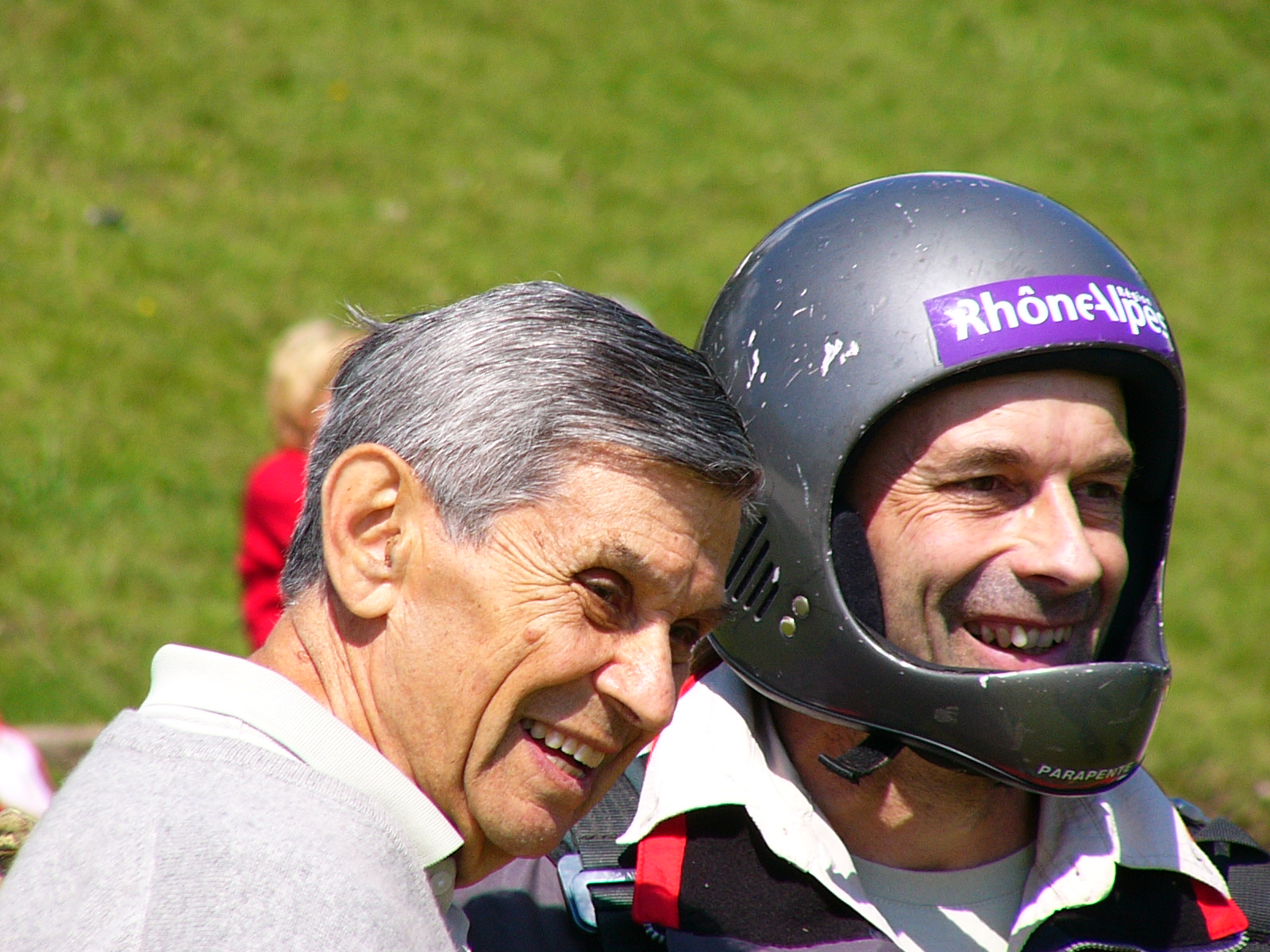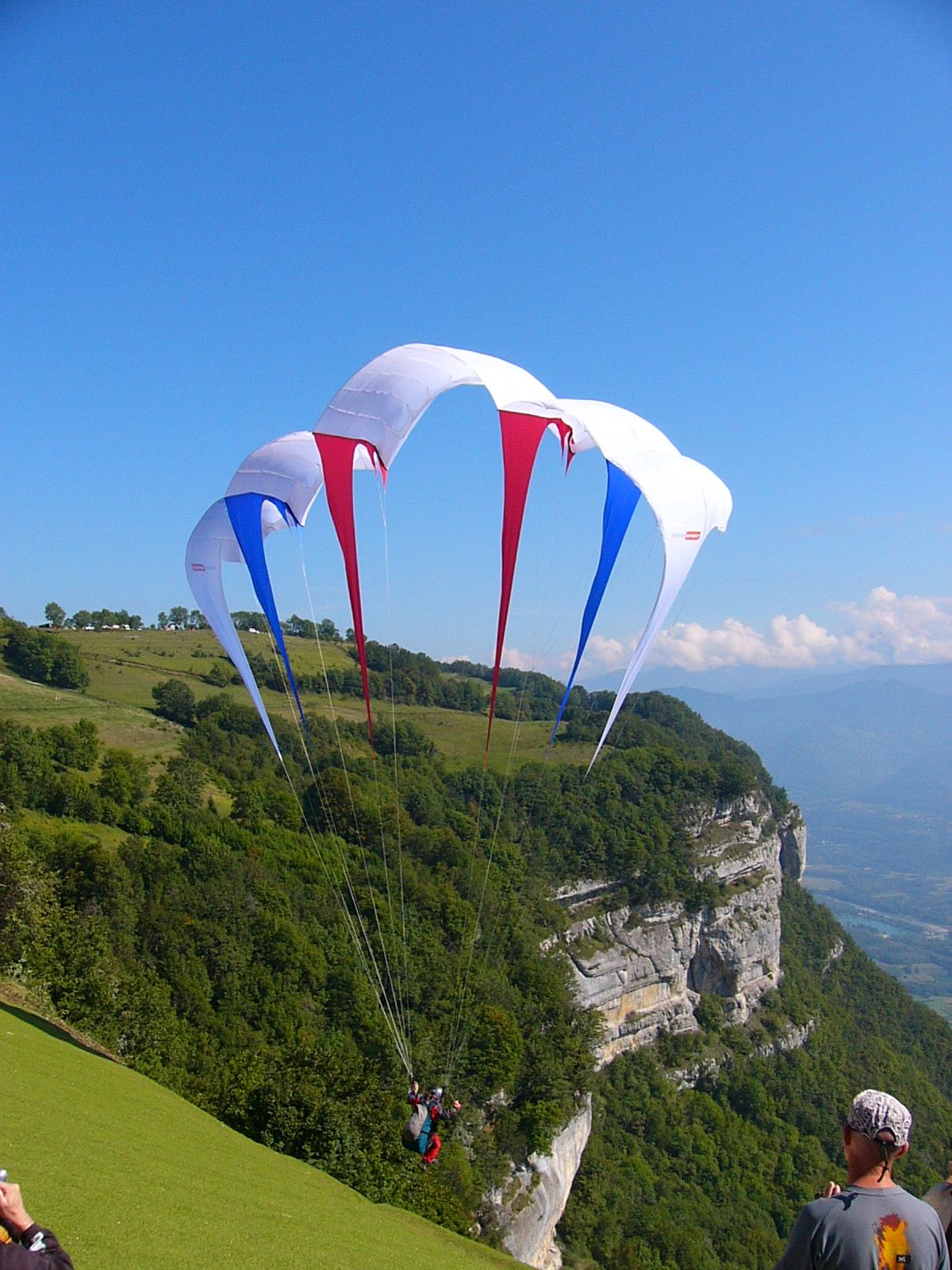Une bien triste nouvelle, Dave Barish est décédé le 15 Décembre à l'age de 88 ans.
Ci joint une photo de lui et Francis heilmann que j'avais prise en 2005 à la coupe Icare, année où Francis avait fait revoler une réplique de la Saiwing, et l'"obituary" écrit par son fils.


DAVID BARISH, PARACHUTE PIONEER, DEAD AT 88
David Theodore Barish, an aeronautical engineer and inventor who has been called the “Forgotten Father of Paragliding” died on December 15 in New York City. He was 88.
His family announced his death, which was the result of Multiple Myeloma.
David Barish was born in 1921 in Passaic, New Jersey. Full of wanderlust, he frequently ran away from home and had adventures that he loved to retell throughout his life. In 1939 he found a way to leave home permanently and see the world, training as a pilot through a government program established to expand the number of pilots available for the country’s needs. Afterwards, he worked as a flight instructor on Long Island. He became a co-pilot for TWA, flying transatlantic routes, and then joined the Air Force. Ready to join the war effort once he was trained as a fighter pilot, he graduated in the P-51 on V-J Day, the day Japan surrendered.
The Air Force then trained David at the USAF Institute of Technology, where he earned a B.S. in Aeronautical Engineering and sent him to the California Institute of Technology where he obtained his Master’s and Professional degrees in theoretical aerodynamics. Taking this knowledge to Wright Patterson Air Force Base in Dayton Ohio, he worked in the Research and Development division. He became a test pilot, flying modified versions of the T-6 training aircraft, and the P-47 and P-51 fighters, and an early model of the first jet aircraft developed for the Air Force. Leaving the service in 1953 as a Captain, he continued as a test pilot for Grumman Aviation flying amphibious aircraft. Once, while landing at a lake in Connecticut, he struck a newly-installed power line, flipped in the air, hit the water upside down and woke up in the aircraft on the bottom of the lake. He escaped uninjured. Later, he worked as a consultant while developing an idea for a new form of parachute that would allow much more control, a slower descent, and use far less material than the standard form. This would become the Vortex Ring Parachute, a patent for which was granted to him in July 1957. This light, flexible parachute consisted of four fabric panels rotating on an axis, like a helicopter rotor. It was developed in several sizes for uses as far ranging as delivering tiny payloads to landing space capsules. They are still in use by the American military today.
In the 1960’s Barish began working on a new design that addressed the need for a high-performance gliding parachute. This would eventually become the Barish Sailwing, a lobed parachute with a rounded self-inflating leading edge. Originally developed in 1965 as a controllable method to return space capsules safely to the earth, David manufactured a lightweight, smaller version for testing. Barish or his son, Craig, would attach themselves to this wing-shaped parachute that measured 44 feet across and run down a steep slope until the parachute’s canopy was lifted overhead by the air rushing against it – and lift the “pilot” off the ground. The successful first flight occurred on October 15th, 1965
In the 1970s this new idea of flying from the ground using a wing-shaped parachute began to be referred to by those who witnessed it as “slope soaring.” It was thought that this would become a sport among the thrill seekers who already were jumping out of airplanes in an activity now known as sky-diving. Eventually the slope-soaring sport, redubbed paragliding, would flourish.
Other patents granted Barish include the Flexirotor, a flexible helicopter blade system -- and a series of vortex ring modifications, the latest in 2006. Constantly trying to perfect each of his aeronautical inventions, Barish was frequently found towing parachutes behind his personally modified automobile, filming and adjusting tailoring and suspension lines. His children learned at an early age how to safely hang out of a moving car window with a movie camera focused on a rotating or wing-shaped ‘chute.
In 2000, at the annual Coupe Icare international paragliding event in St. Hilaire, France, where he was honored for his contribution to the sport, Barish had his first tandem paraglide at the age of 79. In 2004, Barish was recognized by the United States Hang Gliding and Paragliding Association with the Presidential Citation for his work, “In recognition of outstanding contributions which have significantly enhanced and promoted the sports of hang gliding and paragliding in the United States.” In 2009, a reconstructed replica of his original design was flown before an amazed crowd in St. Hilaire.
Predeceased by two wives, Kavvy Barish and Frances Barish, and two sons, Steven and Philip, David will be mourned by his third wife, Johanna Roman, and three children, Craig Barish of Manhattan, Dana Barish of Buffalo, NY and Wendy Barish and her husband, Michael Greenstein, both of Woodstock, NY.


